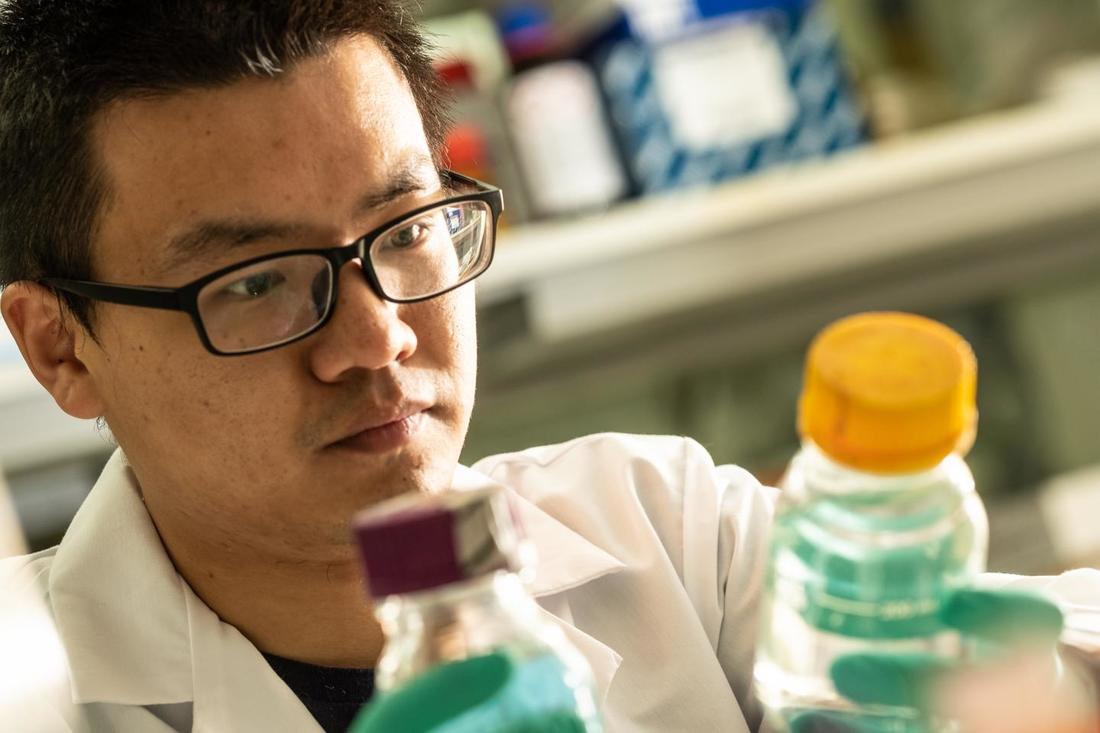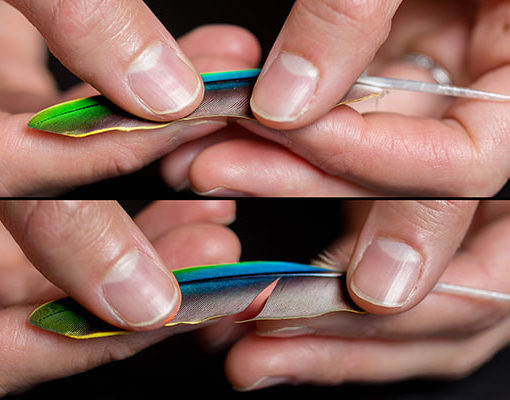
Scientists Use Spheres for Safer Water
Rice University researchers create reusable water-treatment particles to effectively eliminate BPA and other contaminants.
Titanium Dioxide Flowers to Purify Water
Rice University scientists have developed micron-sized spheres to catch and destroy recalcitrant organic pollutants. These contaminants, such as bisphenol A (BPA), can seep into water supply and may have endocrine-disrupting effects, especially in babies and small children.
The research demonstrated that reactive oxygen species (ROS)—in this case, hydroxyl radicals—may degrade BPA into harmless chemicals. Titanium dioxide (TiO2) releases ROS when triggered by ultraviolet light. But because oxidating molecules fade quickly, BPA must be close enough for attack. To overcome this dilemma, the Rice scientists created unique titanium dioxide spheres, which resemble flower-like collections of TiO2 petals, to provide a high surface area. “The TiO2 I synthesized was designed to have a hierarchical surface. It is assembled from thin TiO2 nanosheets, which endows it with very high surface area (3 times higher than commercially available TiO2–P25),” said Rice graduate student and lead author Danning Zhang in an interview with Innov8 Updates. The Rice researchers use the high surface area TiO2 to anchor cyclodextrin, a benign sugar-based molecule often used in food and drugs. Cyclodextrin has a two-faced structure, with a hydrophobic (water-avoiding) cavity and a hydrophilic (water-attracting) outer surface. BPA is also hydrophobic and naturally attracted to the cavity. Once trapped, ROS produced by the spheres degrades BPA into harmless chemicals. Working in the lab of Dr. Pedro J. J. Alvarez, the researchers determined that 200 milligrams of the spheres per liter of contaminated water degraded 90 percent of BPA in an hour, a process that would take more than twice as long with unenhanced titanium dioxide. The work fits into technologies developed by the Rice-based and National Science Foundation-supported Center for Nanotechnology-Enabled Water Treatment, because the spheres self-assemble from TiO2 nanosheets. Alvarez serves as director of the Center. “This new material helps overcome two significant technological barriers for photocatalytic water treatment,” Alvarez said in the University news release. “First, it enhances treatment efficiency by minimizing scavenging of ROS by non-target constituents in water. Here, the ROS are mainly used to destroy BPA. Works Consulted Zhang D, Lee C, Javed H, Yu P, Kim J-H, and Alvarez PJJ. Easily-recoverable, micron-sized TiO2 hierarchical spheres decorated with cyclodextrin for enhanced photocatalytic degradation of organic micropollutants. Published Online. October 2018. Rice Uniiversity News & Media. New spheres trick, trap and terminate water contaminant. News Release. Accessed October 11, 2018. |
 Rice University researchers have enhanced micron-sized titanium dioxide particles to trap and destroy BPA, a water contaminant with health implications. Cyclodextrin molecules on the surface trap BPA, which is then degraded by reactive oxygen species (ROS) produced by the light-activated particles. CREDIT: Danning Zhang/Rice University |




